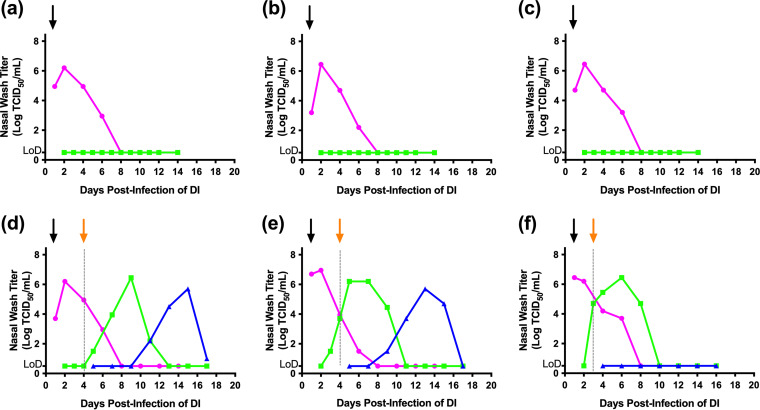FIG 3.
Transmission of avian influenza A/Anhui/1/2013 (H7N9) over two sequential rounds of respiratory contact. Six directly inoculated (DI) ferrets were intranasally infected with 1 × 106 TCID50 of A/Anhui/1/2013 (H7N9) in a 1-mL volume. Twenty-four hours later, each DI animal was introduced into a transmission cage with a naive respiratory contact (RC1) ferret. Nasal wash samples were collected and assayed for evidence of viral infection, as described in Fig. 1. When the RC1 ferret became infected, it was housed with a new respiratory contact (RC2). Each panel (a to f) represents an independent replicate of DI, RC1, and RC2 (if RC1 became positive). Magenta, green, and blue lines represent the nasal wash titers for the DI, RC1, and RC2 ferrets, respectively. The black arrow denotes the day that the DI and RC1 were paired, and the orange arrow and dashed line indicate when the RC1 and RC2 ferrets were paired. Nasal wash samples were titrated on MDCK cells, and the results are expressed as log10 (TCID50/mL) of nasal wash. LoD denotes the limit of detection (0.5 × log [TCID50/mL]).

